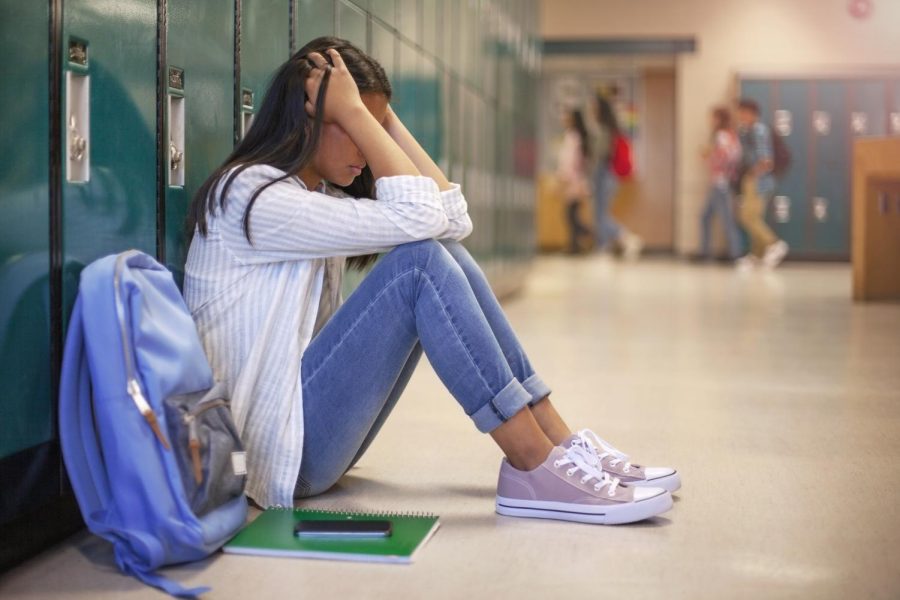Teenage girls are suffering, desperate for mental health support
Getty Images
Last week, the CDC released a report outlining record-high levels of sadness among teenage girls. Columnist Lucy Atkinson believes it’s time to listen to and support teenage girls.
February 22, 2023
While the stigma around discussing mental health has come a long way in recent years, we are clearly missing something. Adolescents are still suffering. Their pain needs more attention now than ever before.
As the daughter of a school counselor and a family therapist, my parents have always been protectors of my sister and I’s emotional well-being. This atmosphere of support and love which I grew up in, however, made my teenage years privileged and rare.
In October 2021, the American Academy of Pediatrics, the American Academy of Child and Adolescent Psychiatry and the Children’s Hospital Association declared a state of national emergency as children and teens’ mental health plummeted. With hundreds of thousands of children and teens losing their guardians to the virus and many others trapped in unsupportive homes (without the escape of school and friends) the COVID-19 pandemic played a large role in this crisis.
Most of us are no longer isolated, but our teens are still in danger.
Last week, on Feb. 13, the Centers for Disease Control and Prevention released a new report, revealing record-high levels of sadness among adolescent girls.
According to the report, “nearly 3 in 5 (57%) U.S. teen girls felt persistently sad or hopeless in 2021—double that of boys, representing a nearly 60% increase and the highest level reported over the past decades.” Almost one in three U.S. teen girls, the report also found, seriously considered suicide in 2021.
One in three is a violent statistic. Visions of my high-school hallways plague me when I read it, considering the number of classmates I ignorantly passed by each day.
When one for every three in 100 is 30 teenage girls, one for every three in 1,000 – the student body of my old high school – is more than 300 teenage girls. In 20,000 – the student body here at NIU – one for every three counts more than 6,000 suffering young women.
One in three is an epidemic.
These findings should break our nation’s heart, but they should not surprise us. We have witnessed hatred expose itself to teens and children for centuries.
“The new report also confirms ongoing and extreme distress among teens who identify as lesbian, gay, bisexual or questioning (LGBQ+),” the CDC said.
For that group of children, suicide consideration rates were one in five.
What needs to be done? There’s no easy answer. This suffering is the build-up of countless factors and centuries of hate: against women and girls, against marginalized communities and against love. We do need to listen, though.
If we are privileged (in any societal structure) it is our job especially to listen, not to speak. We need to do what those actually affected feel would be the next best step forward. We need to hear our teens’ stories, and then more importantly, ask them what they need.
And if we are guardians – please, for the sake of everything that is good, we just need to love our children. Teach them to love others, check in on them and ask them how they’re feeling.
We need to recognize the massive state of change adolescents are experiencing and the tumultuous world they are experiencing it in. Be kind, understanding, patient and don’t expect them to turn out any one way.
We need increased school support, and therefore increased school funding, to ensure that the resources each adolescent requires as they grow are fully available, and to ensure that where family-homes fail, love from outside can succeed.
We need normalized and actually accessible therapy options, and we need basic decency from much, much more of our nation’s population.
While our world is much more open to mental health discussion today, we are still not doing enough; the CDC’s report has made this quite clear. Some piece in this twisted puzzle is missing and we must search for it. As we do, let us practice kindness, and let us understand: this is a matter of life and death.







